64 Audio A4s Review - All about the Bass
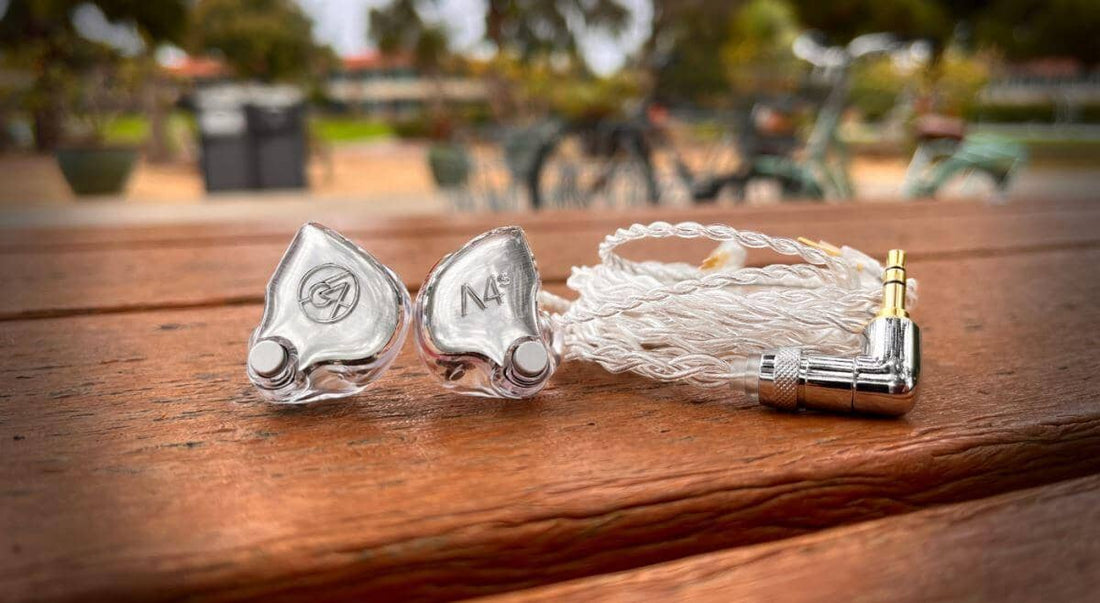
Introduction
Lower-driver count IEMs have always been a fascination of mine; when done correctly, they reflect as a demonstration of efficiency and what a company is able to achieve with what is often perceived as an inherent bottleneck. Indeed, there's just something really satisfying about a mere 4-driver IEM, such as the Symphonium Helios I reviewed recently, wiping the floor with IEMs that have driver counts multiple times its own. These types of IEMs, however, are becoming a lost art with few manufacturers catering to them, partly due to limited interest from audiophiles.
That in mind, the 64 Audio (64A) lineup is actually quite diverse; you just don't see much talk about their lower-driver count IEMs (A2e, A3e, A4t, A6t) on the more affordable end of the spectrum. So I did something I don't do often: I reached out to a company expressing my interest in a review unit. The IEM that I initially had in mind was the 64A A4t; however, much to my surprise, I was told by 64A that they had some new stuff in the pipeline and to hang tight. So I waited. And waited. And waited some more. And then I finally got the go-ahead to send in my ear impressions. You cannot imagine how excited I was at this point, and even more so when I was informed that the model being made for me was a brand-new, entry-level hybrid from the brand!
Enter the A4s. The A4s ($1099), alongside the A3t ($899), will be replacing the A4t, the previous entry point to the company's tia driver technology. While I know that there are a lot of people who are anxiously awaiting 64A's next flagship, I do appreciate that 64A is building upon the "cheaper" (because $1000 is not cheap, OK?) segment of their lineup. Like most of their models in this segment, the A4s is available exclusively as a custom-in-ear-monitor (CIEM) that is built to the unique anatomy of your ear. Read onwards to find out what I think about it.
This unit was provided for review by 64 Audio - thank you! That said, I receive zero monetary incentive depending on whether my review is positive or negative. What follows are my honest thoughts and opinions to the best of my ability.
So what's it like getting a CIEM?
I thought it’d be interesting to give some insight into the CIEM process for readers who haven’t purchased one before! Personally, the main thing that's kept me away from CIEMs so far has been the logistics of the overall process. Unlike normal IEMs, you can't snag one on the secondary market (I mean, you can, it just won't fit you), or order one at the click of a button and have it delivered to you a few days later. Some patience is required here, and for someone like me who's used to instant gratification...that doesn't come easy! But I digress. The first thing you'll want to do is make an appointment with your local audiologist for ear impressions. The process of getting ear impressions goes something like this:
- The audiologist will check to make sure your ears are devoid of earwax.
- A small piece of foam with string attached is inserted into your ear canal; the foam acts as a stopper for the material and the string will be used to pull out the impression material when it's taken shape. This is probably the most uncomfortable part of the entire process due to how deep the piece of foam goes.
- You'll bite down on a bite block to stabilize your jaw movement. Make sure you use a bite block! Your ears also expand when your mouth opens which, in turn, ensures a proper fit with the CIEM.
- At this point, the audiologist will fill your ear with impression material. This part is painless, just expect to have the impression that you're hearing things from underwater at this point.
- You'll sit there for a few minutes to let the impression material take form, after which they'll be pulled out using the aforementioned piece of string.
And voila - you’re all set. All in all, the process of getting the impressions done set me back about 20 minutes and $100. After this, I confirmed with 64A that the impressions looked good, mailed them off, and then waited for my IEM to be made. The entire process took about two and a half weeks from getting the impressions done to when the A4s arrived (granted, I had 7-day rush processing). But it wasn't too intensive a process after all! Even better, 64A scans your impressions and saves them as an .STL file for future reference.
Roll the review...
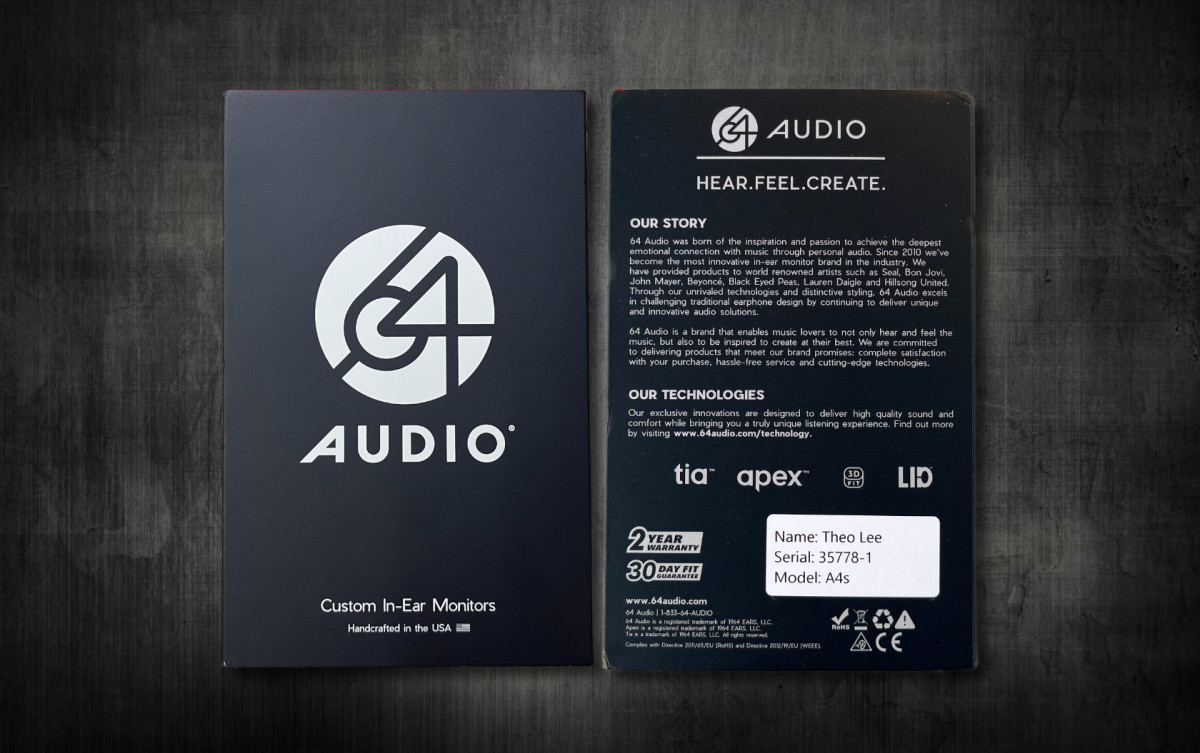
The A4s arrives in 64A's standard packaging for CIEMs. On the back, there was a sticker denoting my name and my IEM's unique serial number. There's not really much to comment on here, and it's not exactly a super premium experience if I'm being perfectly honest.

The front and back of the lid of 64 Audio’s new case.
But something I do think merits comment is the new, aluminum hockey-puck case that 64 Audio includes with their CIEMs. This is a major step up from the “personalized plastic case” they’ve used in the past which I found rather unwieldy and cheap-feeling. From what I can tell, this hockey-puck case has been designed from the ground-up; it’s slightly larger than most others I’ve seen on the market. And for good reason! It’s to accommodate a clever, custom foam insert that’s been nestled into the lid of the case. The insert has cutouts for a cleaning tool, desiccant, and three sets of 64 Audio’s apex modules. This is very thoughtful, as most of these cases I’ve seen force you to just shove all your accessories alongside the IEMs which can cause them to get crushed.
There is also noticeably less threading (which facilitates getting the IEMs in-and-out quicker) than other hockey-puck cases I’ve handled, while maintaining smooth threads and no chance of the lid accidentally coming off. The only critique about this case I would point out is the felt lining. Realistically, unless you clean your CIEMs every time, it’s going to get gunked up and require cleaning eventually. Hint: It’s much easier to clean a rubber lining! But it’s a small niggle. The case can also be custom engraved with two texts of your choice which is a nice touch.
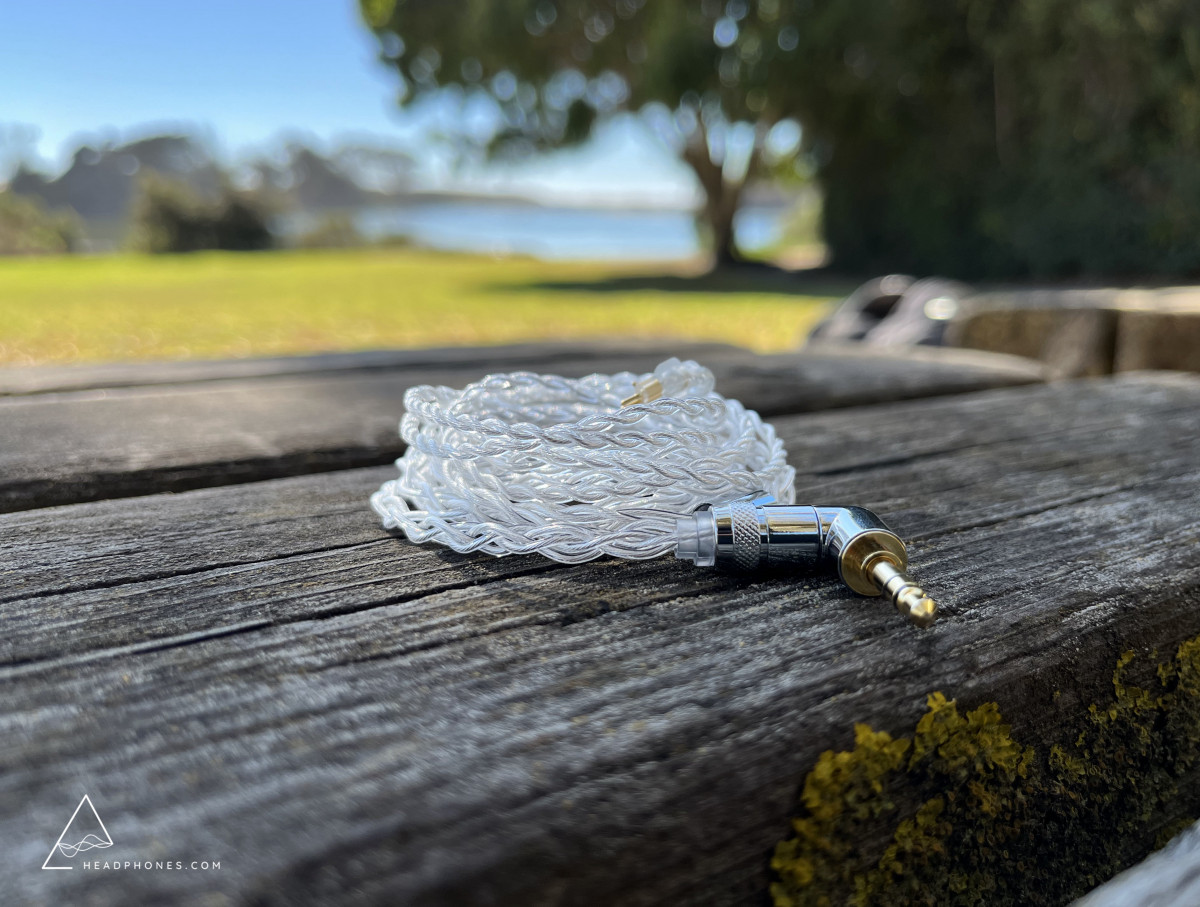
I believe that 64A's CIEMs generally include their Professional Cable terminated in choice of 2-pin 0.75mm or the new IPX connector. However, my A4s arrived with a prototype cable that 64A was seeking more feedback on. So far only the cable material and the 2-pin connectors of this cable have been finalized. Despite my (very vocal) criticism for 64A's cables in the past, I think this cable is another step in the right direction. The material is soft, pliable, and microphonics are a non-issue. In my opinion, it’s an improvement over the Premium Silver Cable on these fronts. Do I think it’ll be worth what it’s probably going to cost? Well, no, probably not. But it’s a nice cable overall minus the addition of memory wire.
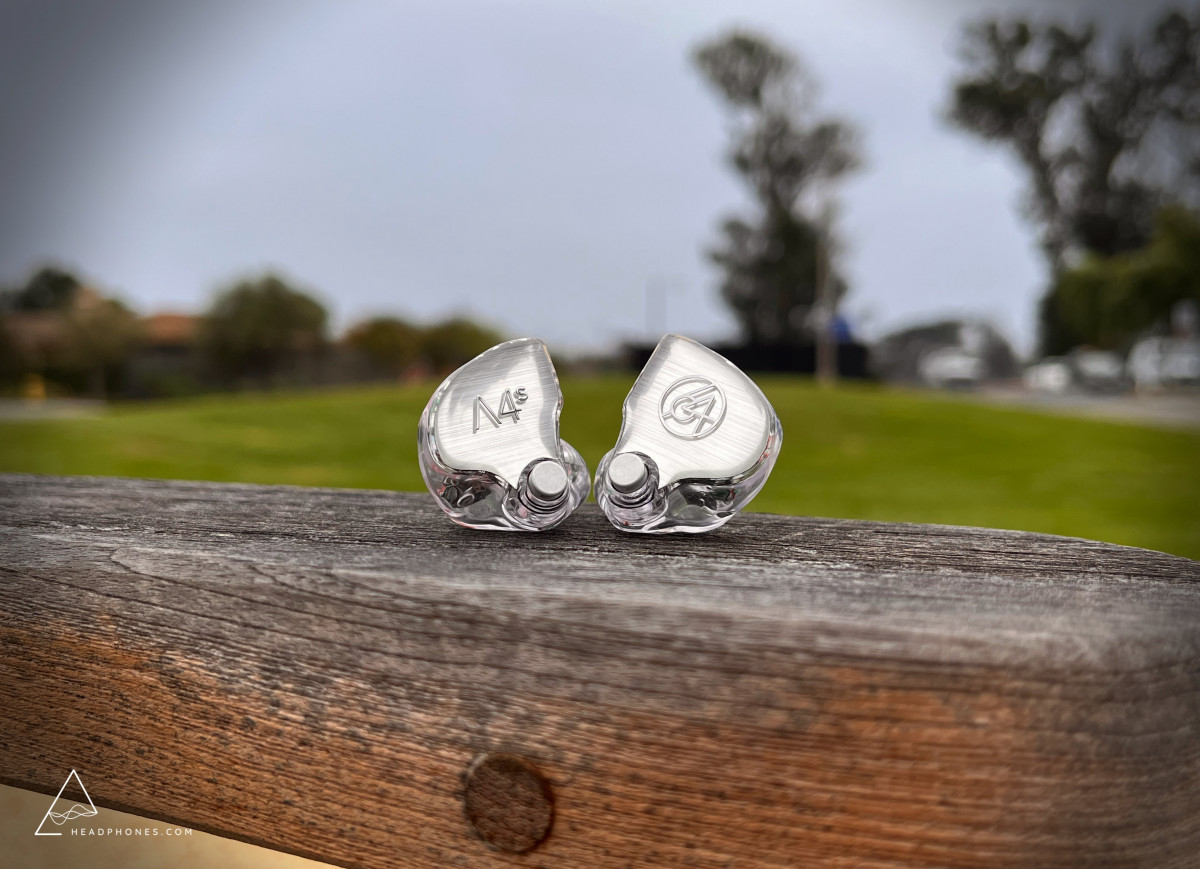
Now, moving to the A4s itself, I have to say that I was extremely impressed when I got my hands on them. The acrylic shell of the IEM is perfectly smooth and next to clear, affording a view of all the components being utilized inside. You can see the dynamic driver, the two midrange BAs, the tia tweeter in the nozzle, and the tube connecting the apex module to the nozzle. The gap between where the shell meets the faceplate is also perfectly seamless and sports the "A4s" and "64" logos in silver. These logos are then contrasted to the brushed aluminum faceplates underneath. Each time I pop out my A4s, I have to appreciate what stunners they are; it's clear to me that 64A has honed the art of constructing their CIEMs, and quite frankly, I find no flaws on the front of build quality.
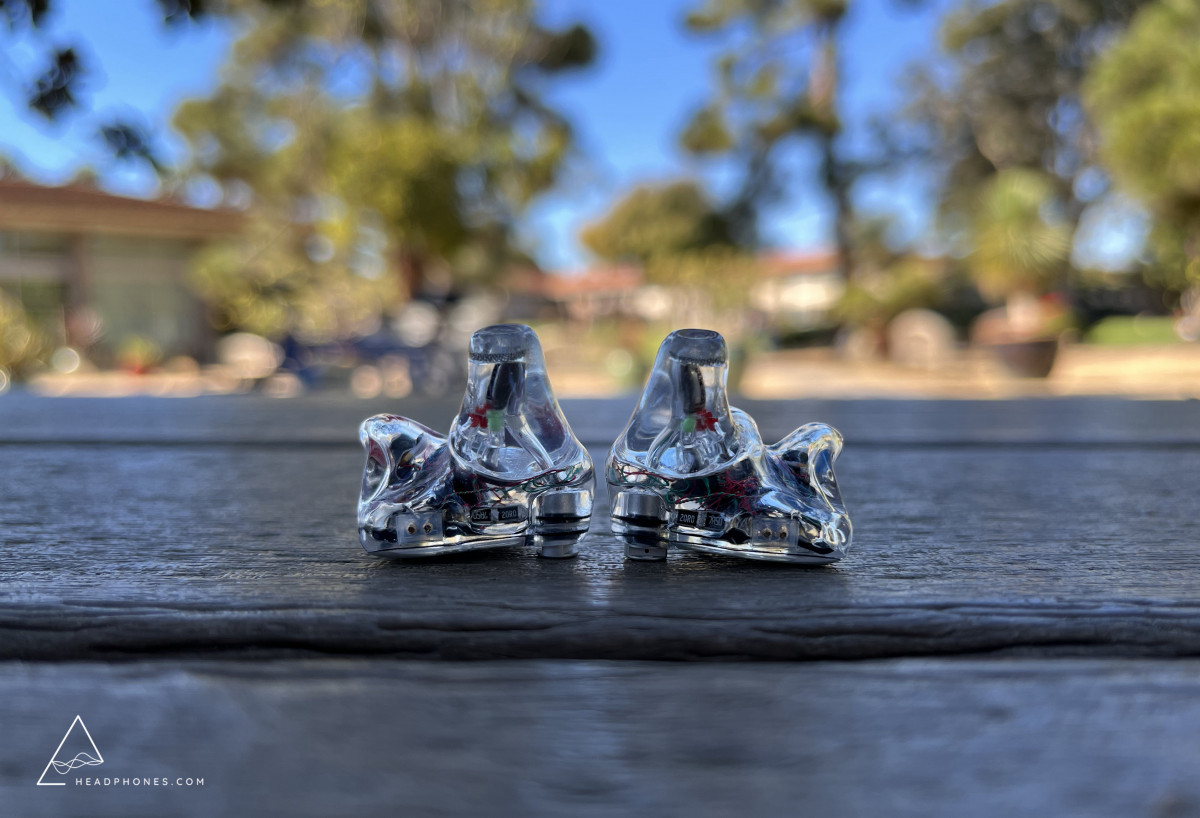
Expectedly, the A4s is a near-perfect fit for my ears. While it felt somewhat awkward wearing them for the first few minutes (again, I'd never worn CIEMs before), this feeling quickly abated and a couple hours had passed listening to music before I knew it. Furthermore, a traditional turn-off to CIEMs, at least for me, is the perceived lack of breathability and the subsequent pressure build-up. But that isn't a problem with the A4s thanks to 64A's apex technology. This technology employs a module containing viscoelastic foam to control the release of air pressure; this module is routed directly to the nozzle of the IEM via a tube. You inevitably lose some isolation as a result, but the A4s is still one of the most isolating IEMs that I have worn. While there's no way for me to measure it, the A4s is noticeably more isolating than my 64A U12t which is also (in theory) rated for -20dB with the M20 apex module. CIEMs are definitely a win in my book, at least on the fronts of isolation and comfort.
One of the other benefits of a CIEM - as the name implies - is customization. 64A has an online tool that you can use to customize your CIEM with your choice of 1) shell color, 2) faceplate, 3) logos, 4) cable, and 5) case. You can even upload your own photos to have them used!
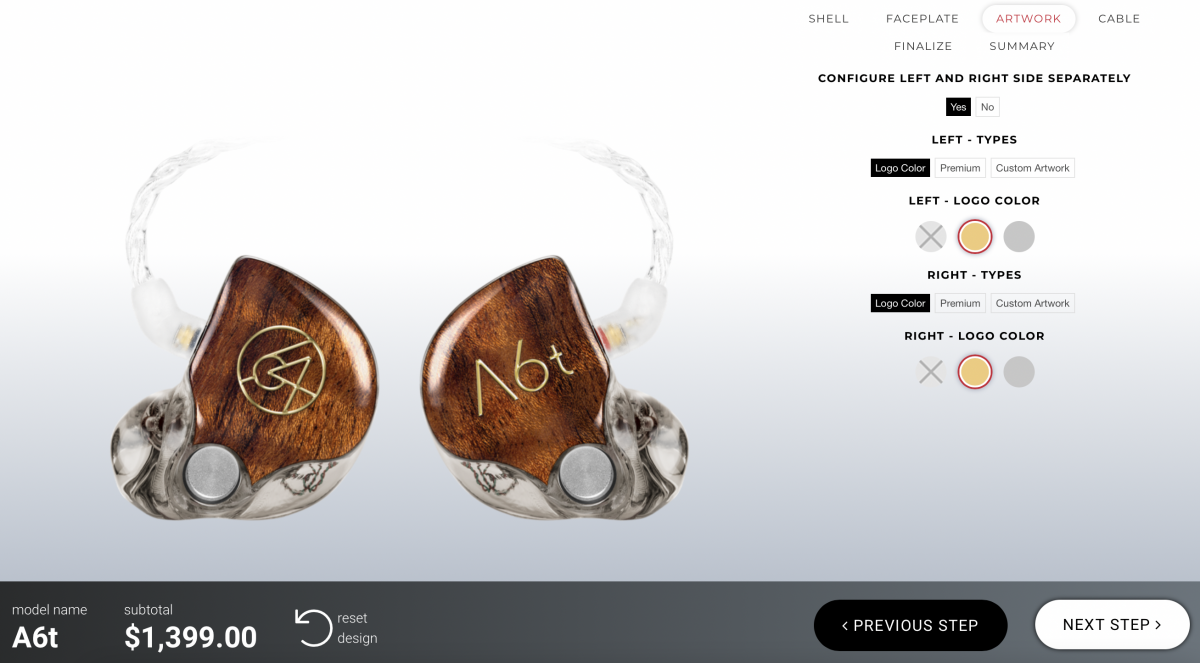
I had a couple of "weeb" designs for my CIEM in my mind; unfortunately, I neither think my editor would be very pleased about me posting them here, nor would 64A have been too keen to cater to them for a review unit. In lieu of said designs, I chose to go with the Brushed Aluminum finish which I think turned out pretty great too ;)
A disadvantage of CIEMs is if you have particularly waxy ears; earwax builds up easier on CIEMs because they rest deeper in your ear canal. This isn't an issue for me, but just in case, 64A has employed a mesh guard inside the A4s' nozzle to catch excess earwax.
Source & Drivability
All critical listening was done off of an iBasso DX300 and iPhone 13 Mini with lossless files. It feels weird that I’m not mentioning the ear tips I used here, but there’s no ear tips because this is a CIEM! I also found the A4s easy to drive, pushing around 20% volume on my iPhone to hit my usual listening volumes (~70dB). Hissing was a non-issue. You don’t need some fancy-dancy audiophile source to enjoy the A4s - seriously.
Sound Analysis
The frequency response graph below was taken off of an IEC-711 coupler using a custom attachment provided by 64 Audio. As with most CIEM measurements, there are idiosyncrasies particular to this measurement setup (for example, putty is used to form a seal), and the measurements should not be considered entirely accurate after the resonance peak at ~7kHz. If you have other apex modules such as the MX and M15 modules, they will have the effect of dramatically decreasing (MX) and marginally decreasing (M15) the sub-bass.
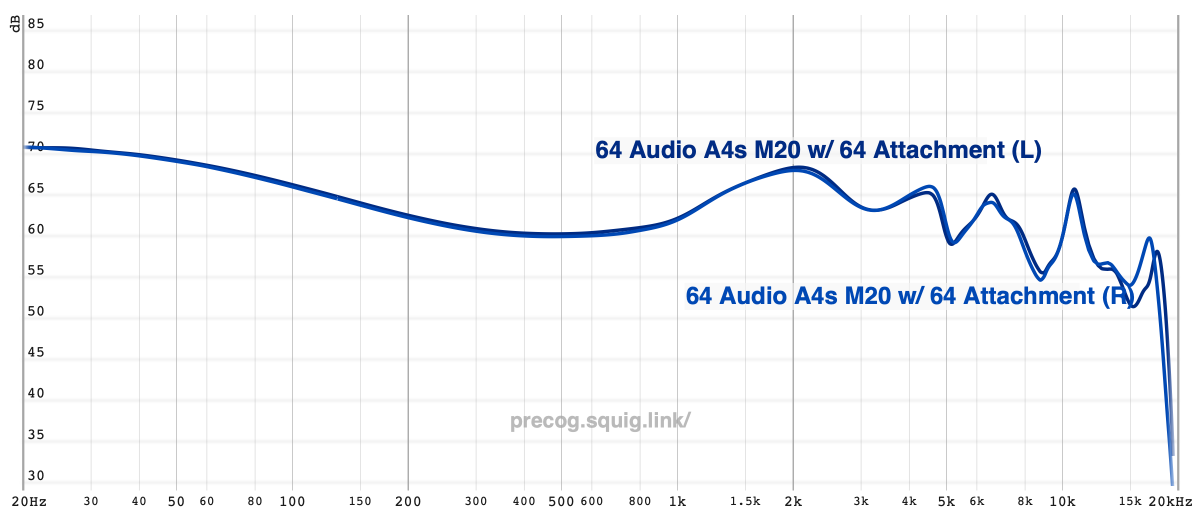
The calling card of the A4s is the bass response beyond a shred of doubt. It is beautiful, relegated almost entirely to the sub-200 Hz regions and concentrating no less than 10+ decibels of sub-bass at its peak. I can easily hear the fettering, that slight hum, at ~50 Hz as the drop is about to hit on Everglow’s DUN DUN at 0:51; I can feel the 20 Hz frequencies more than I have on most any other IEM. The dynamic driver in the A4s is also surprisingly fast, keeping pace with the speedy DnB bassline of Illenium and William Black’s “Superhero”, yet with satisfactory amounts of decay on slower tracks. Of course, nothing is perfect, and I do find the bass on the A4s to lean toward the drier side. It’s not as dry as, say, the Moondrop Blessing 2 or the Thieaudio Monarch’s bass, but I find myself desiring slightly more texture despite the A4s’ dynamic driver being reasonably bouncy for fluctuations in bass volume. Regardless - many readers will know that I’m a basshead, and I’m not afraid to admit that this is the type of bass I’ve dreamed to no end about my 64A U12t sporting.
Moving forward, the midrange of the A4s follows what I’ve come to associate with being 64A's “default” midrange tuning; a tuning, mind you, that I’m quite fond of. You have a flatter lower-midrange with a touch of warmth to keep things from sounding too segmented, and then a steady rise from 1-2kHz for a more gentle pinna compensation. This is followed, in turn, with a slight recession to the presence regions. This recession is most apparent within the context of soprano-oriented singers such as Carrie Underwood. On "Some Hearts", the notes she's belting don't quite soar, instead taking on a more muted characteristic. But it’s a deliberate tuning decision - done correctly in my eyes - that meshes a more relaxed midrange presentation with a balanced, near-neutral note weight.
Unfortunately, I can’t say I’m necessarily a fan of the A4s’ treble response. I’d describe the treble here as being “light and feathery” which, to be fair, might not be a bad thing depending on the type of treble presentation you’re looking for. More closely, the A4s is lacking some lower-treble at around 5kHz and a similar sentiment seems to also apply to certain parts of the mid-treble. This does mitigate unwanted harshness - that sense of screechiness - to certain instruments like cymbals, and it’s not a dealbreaker given that the A4s is far from being rolled-off. The tia driver peaks for air at ~15kHz to my ears; this is in contrast to the measurement above which depicts a peak closer to 12kHz. In any case, that initial sense of crack to finger snaps (such as on IZ*ONE’s “Open Your Eyes” at 0:08) and percussive hits just aren't quite there. Generally, I’d prefer some more body to my treble, and the skeptic in me is left with the impression that this recession is negatively impacting the A4s’ timbre in other parts of the frequency spectrum, namely the midrange.
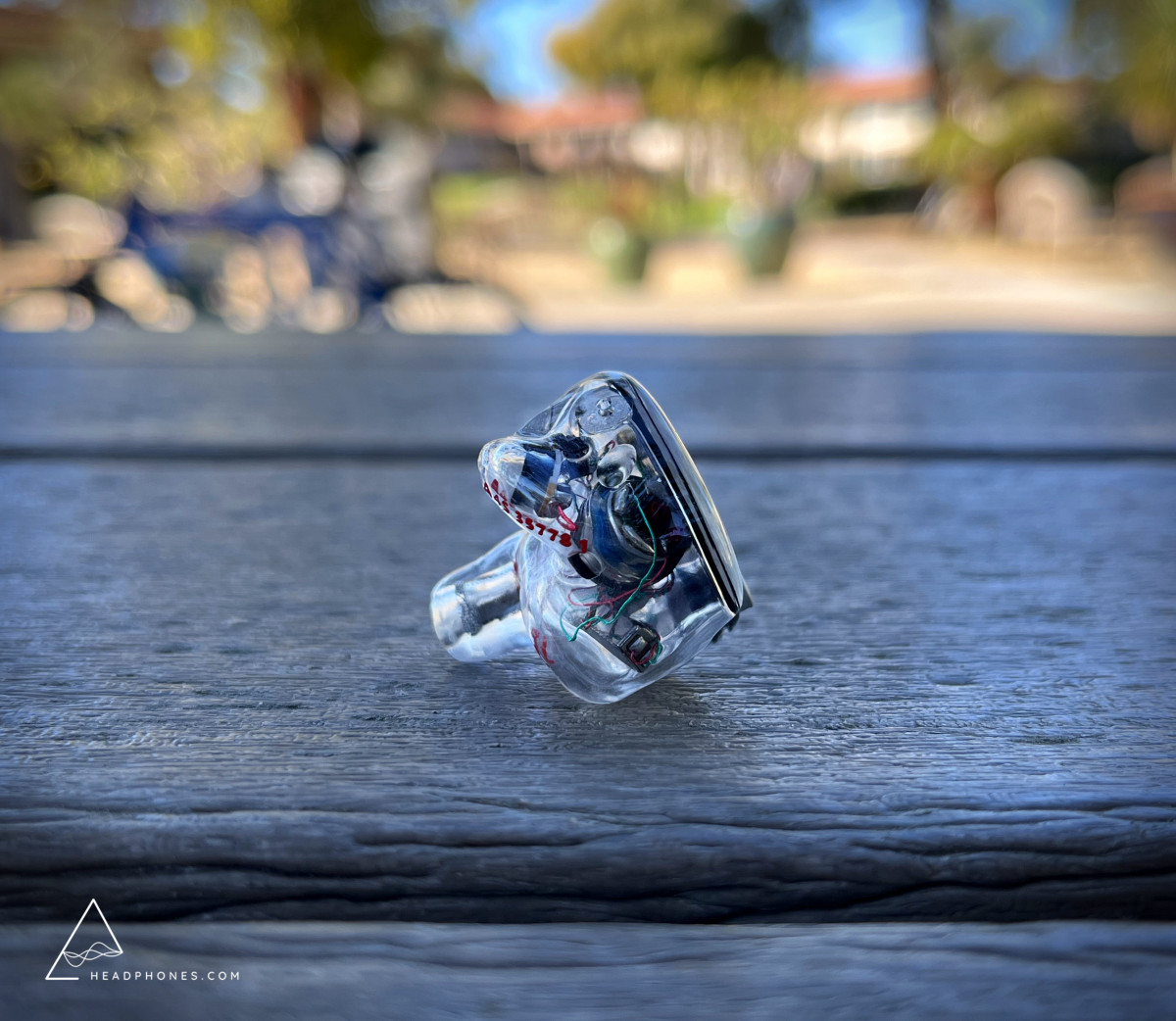
Technical Performance
To my ears, the A4s has surface-level detail down - I wouldn’t bat an eye at calling it reasonably technical on cursory listen - but it stumbles when pressed for more nuanced detail. Here, there’s a noticeable gap versus kilobuck frontrunners like the Symphonium Helios or Moondrop S8 that are indexing for a more technical sound. But technicalities are difficult to assess (this gap is partially baked into the A4s' upper-midrange tuning), and the reality is that differences in technical performance over ~$1000 taper off rather quickly; the A4s’ resolution is sufficient for me to consider it daily driver material.
My main gripe in terms of technical performance would actually be the timbre of the A4s. The good part: Note decay is not gritty and timbral consistency is pretty good between the A4s’ various drivers thanks to the aforementioned, slight lack of texture to the DD being employed. But it’s not a substitute for that sense of authenticity to notes that I’m used to on my U12t or even the U6t. This is why I pointed to the hole in the mid-treble earlier; while normally not a big deal, I suspect the magnitude of this recession is negatively impacting other parts of the frequency spectrum. Or maybe it’s just the BA drivers themselves being used for the midrange; I don’t know. I do know that I’ve heard better on this front, though, and that the A4s’ midrange comes off more plastic-y in the transients than I’d like.
Moving to other intangible metrics, imaging falls along the lines of “above average” but not best-in-class. Localization is reasonably good and, in contrast to some of its brothers, the A4s’ notes lean larger and more enveloping. A/B with the 64 Audio U6t, however, presents a noticeable gap in the A4s’ capability to “project” the center of the stage outwards in a speaker-like fashion. That's a niggle because the vast majority of IEMs lack center image incision anyways, but I can’t help but feel a pang of disappointment that the same magic couldn't be carried over to the A4s.
Luckily, speaking of “magic”, I do find the A4s to have a good sense of macro-dynamics. Perhaps not necessarily on the front of sheer dynamic contrast; however, there’s that characteristic blam to dynamic swings and crashes despite the A4s being largely devoid of mid-bass and lower-treble (characteristics of frequency response that some might associate with a sense of dynamics). This is especially apparent within the context of the A4s' bass, and it reinforces - to me at least - that dynamics are not predicated solely on frequency response. There’s something else at work that contributes to the tasteful sense of punchiness that most of 64 Audio’s IEMs exhibit.
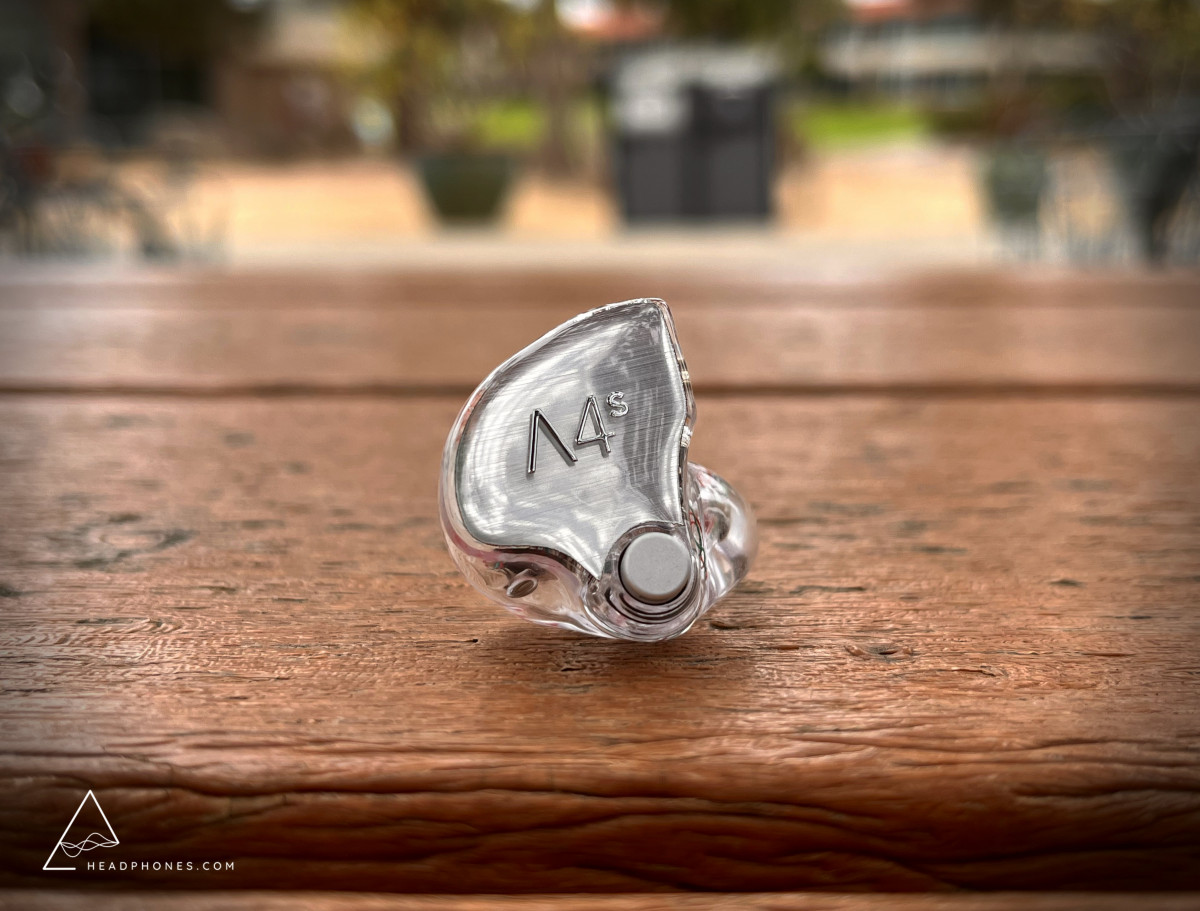
The Bottom Line
I have been unrelenting in my assessment of the A4s' sound quality, and I’m not going to pull the punches when I say this either: The A4s would not be my first recommendation if you’re seeking an IEM at its price point. In my eyes, it’s a peg below the established kilobuck greats unless you’re indexing entirely for that juicy bass response. Hey, I’m just being honest.
But if you’re after a CIEM for the benefits of isolation and comfort, then I think the value proposition shifts around significantly. You can’t purchase a CIEM of the CFA Andromeda 2020, the Sony IER-M9, the Symphonium Helios, or the Thieaudio Monarch/Clairvoyance (anymore at least). There is the Hidition Viento which some of my fellow reviewers swear by; however, I’m hesitant to recommend it after having listened to the UIEM - plus you’ll likely be going through the hassle of international logistics. Furthermore, more than a couple of these have awkward fits as UIEMs already, and the reality is that there is not much competition when it comes to CIEMs at this price point.
Looking at the bigger picture, then, I find the A4s to be another solid entry into 64 Audio’s growing catalog of IEMs. I’d say give it a shot if you’re after a CIEM at around the kilobuck price point, especially if you're after a bass response that'll knock your socks off.
Reference Tracks
- Aimer - Hakuchuumu
- David Nail - Let It Rain
- Everglow - DUN DUN
- Girls’ Generation - Galaxy Supernova
- Illenium - Broken Ones
- Joe Nichols - Sunny and 75
- Keith Urban - Defying Gravity (2009)
- Keiichi Okabe - Weight of the World (NieR:Automata Original Soundtrack)
- Sabai - Million Days
- Sawano Hiroyuki - Best of Vocal Works Remastered (2020)
- Taeyeon - My Voice (2017)
- Tiffany - I Just Wanna Dance
